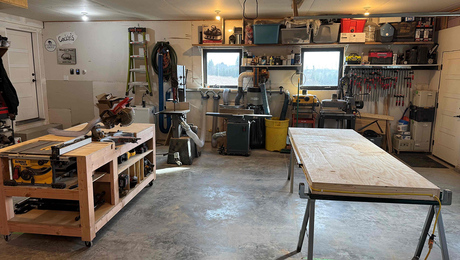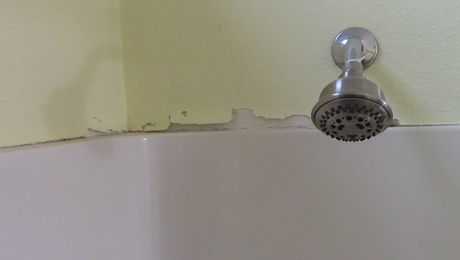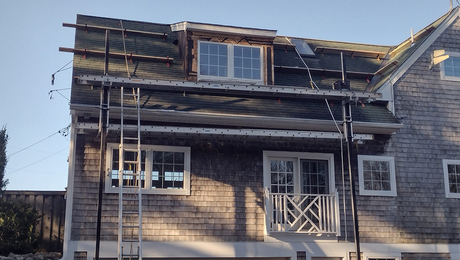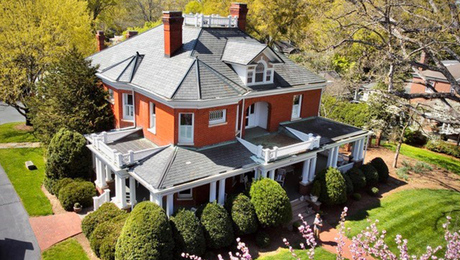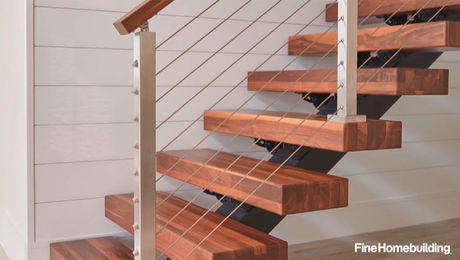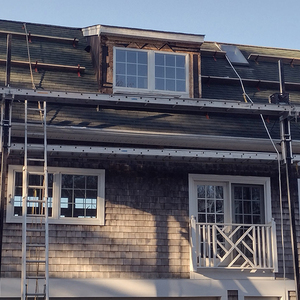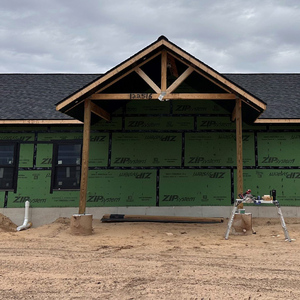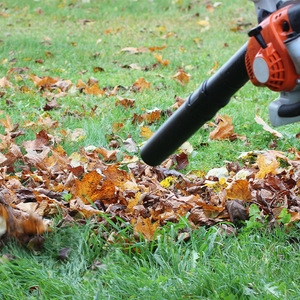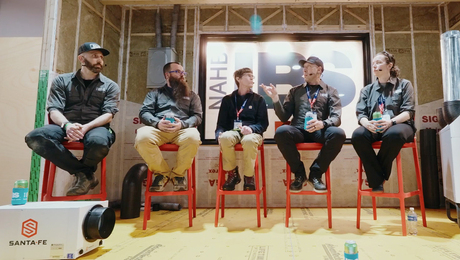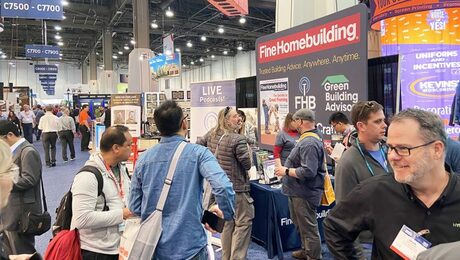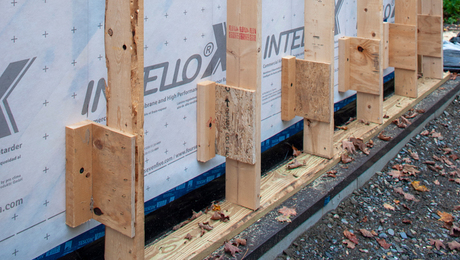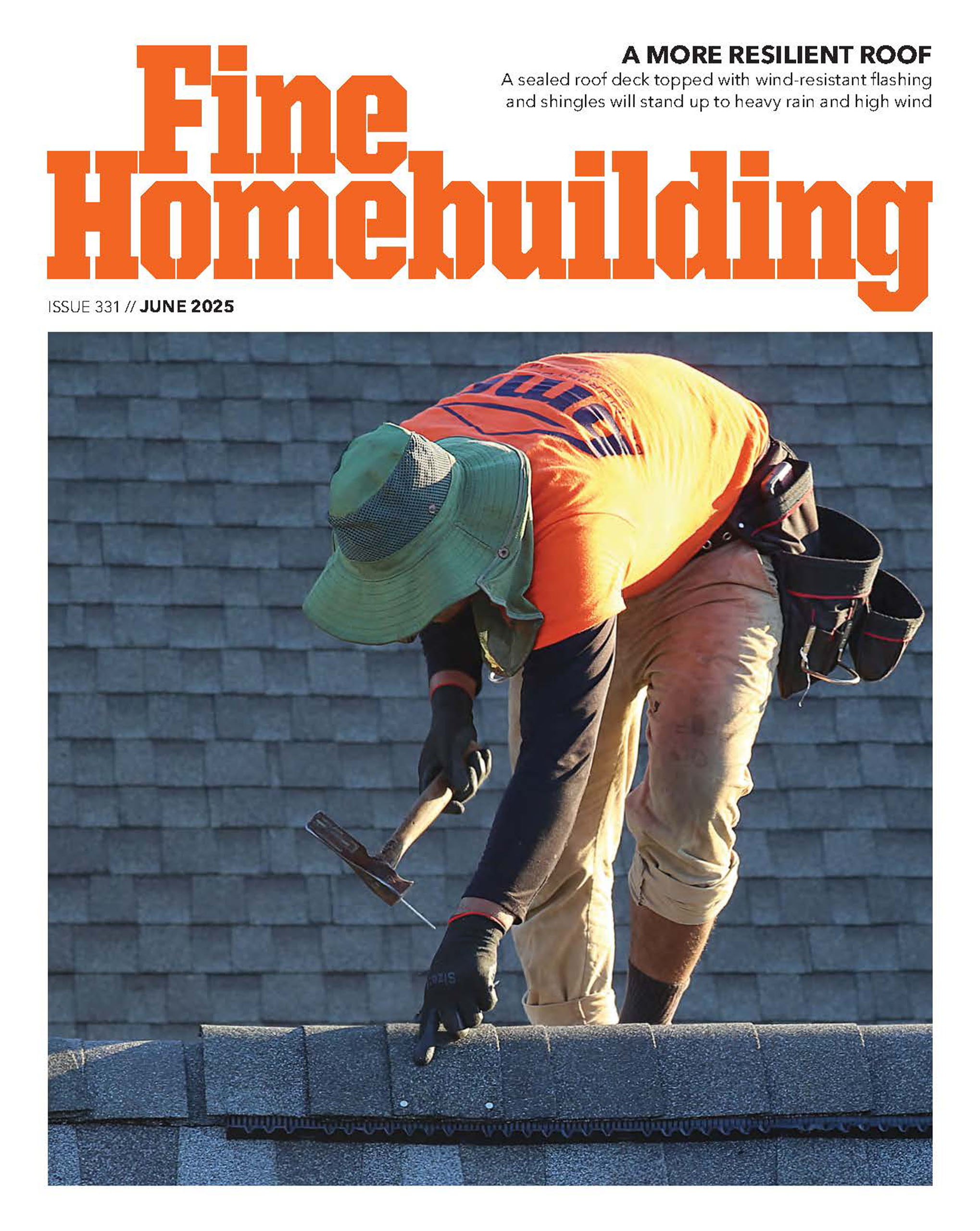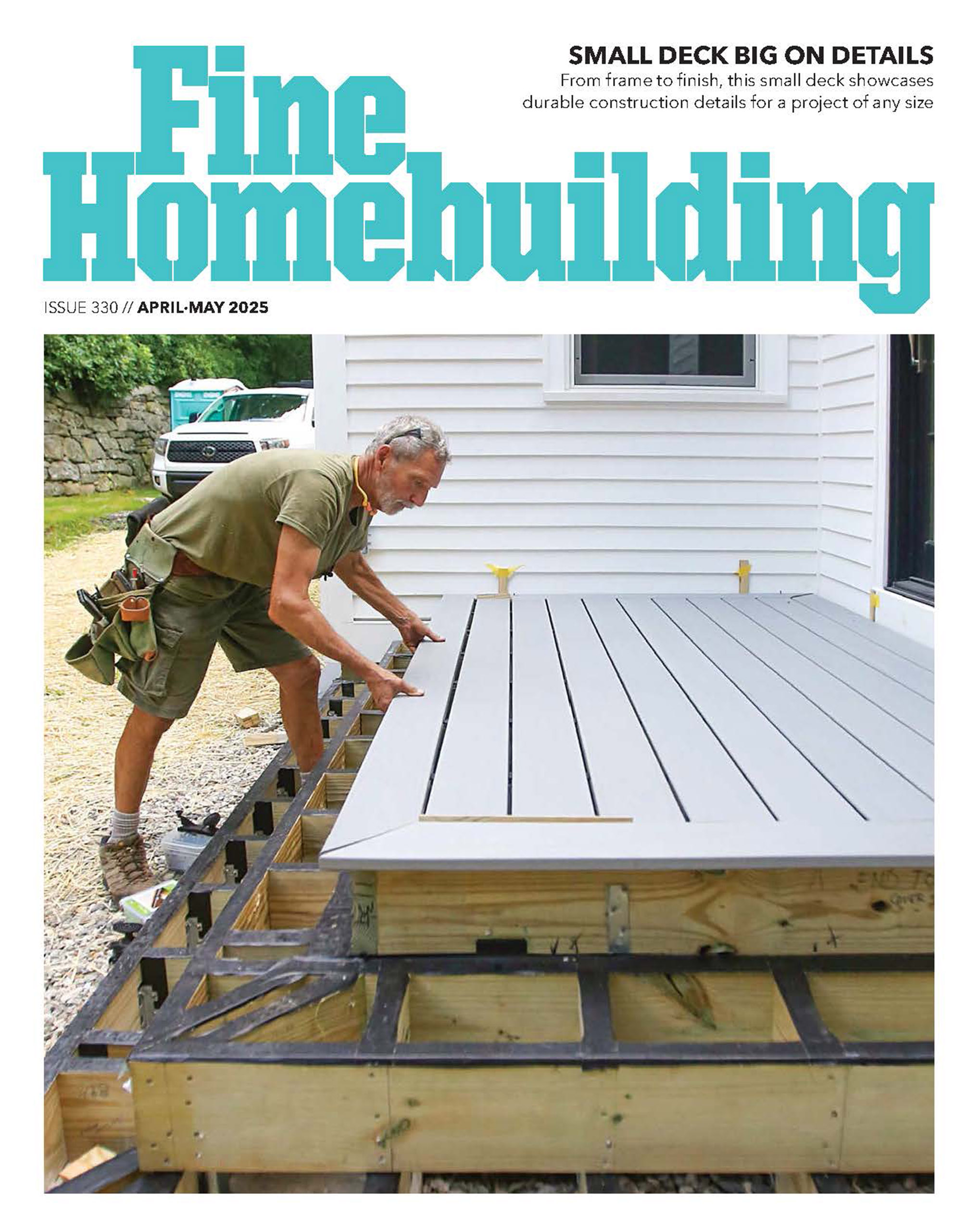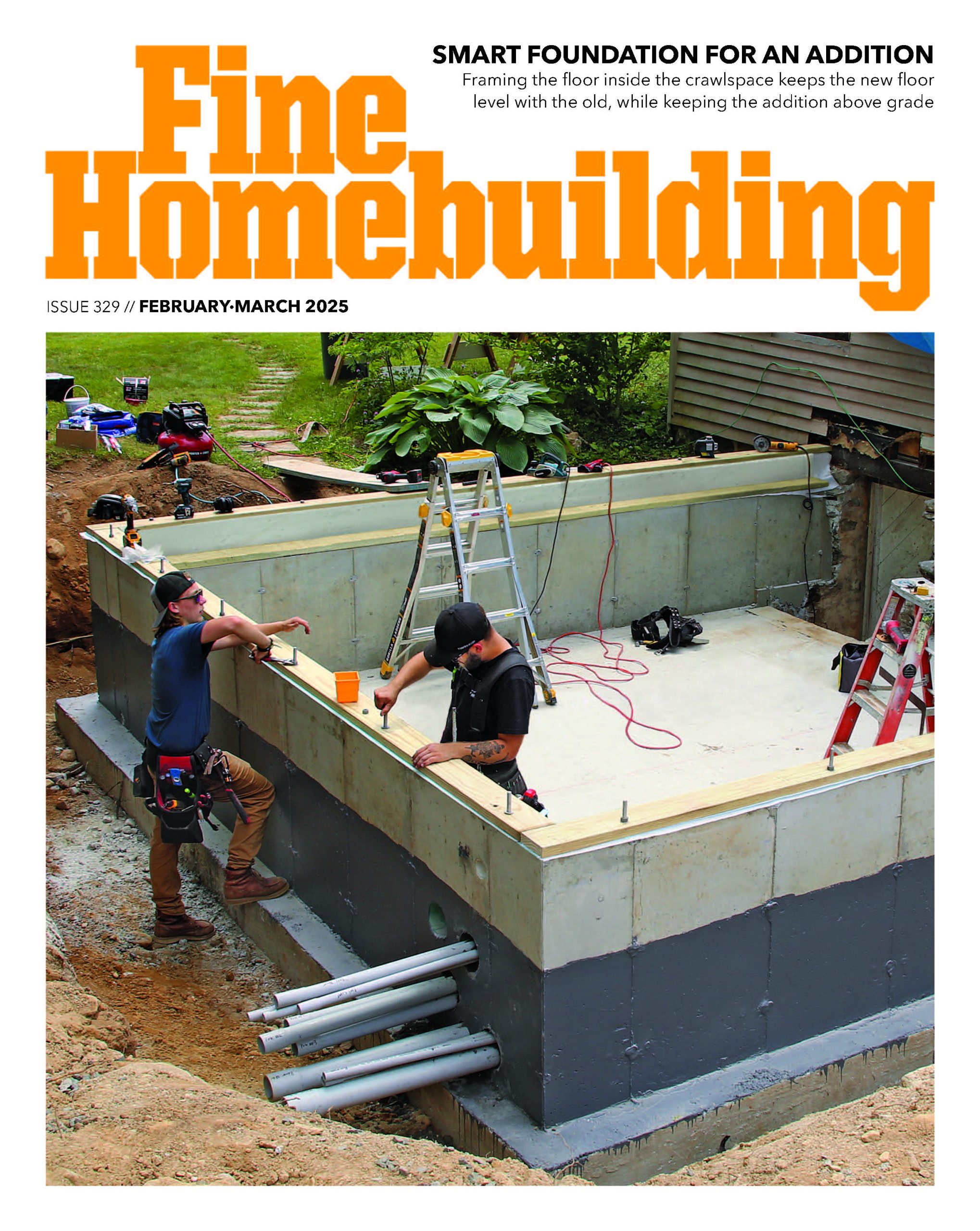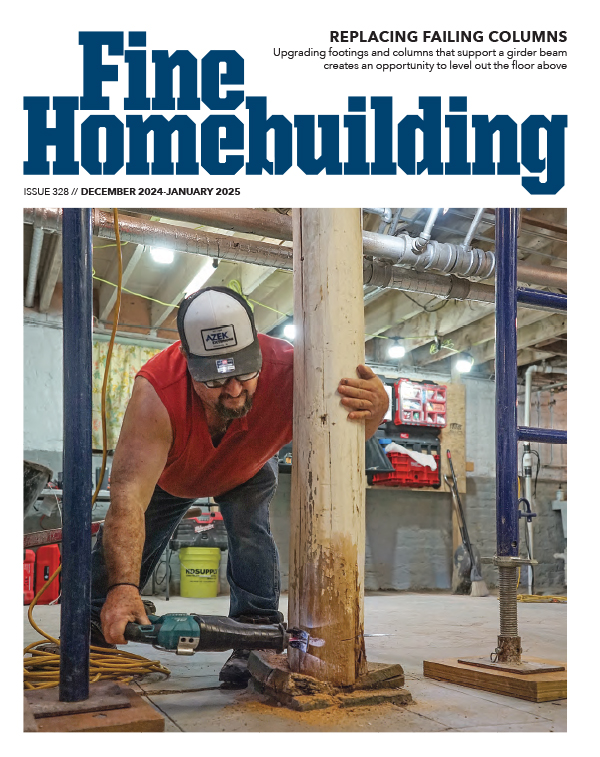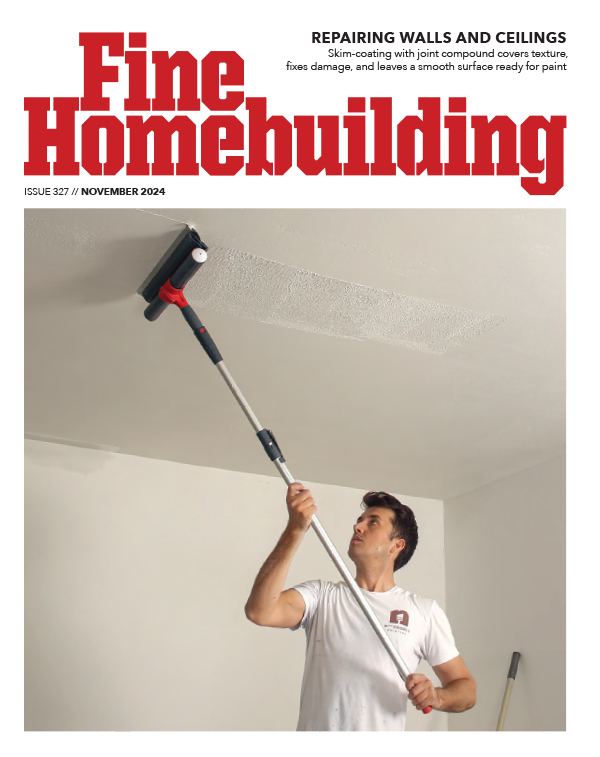Podcast Episode 685: Patching Drywall, Adding Air Barriers, and Rotted Walls
Listeners write in about running a profitable contracting business and ask questions about patching drywall, adding air barriers, and fixing a patio poured against the house.
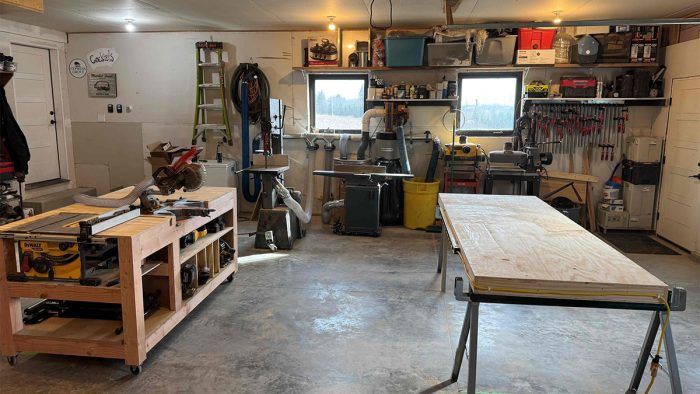
Welcome to the Fine Homebuilding podcast, our weekly discussion of building, remodeling, and design topics aimed at anybody who cares deeply about the craft and science of working on houses. This is senior editor Patrick McCombe. I’m joined by FHB contributing editor and production manager for TDS Custom Construction Ian Schwandt, Fine Homebuilding associate editor Grant Baver, and producer Cari Delahanty. Please email us your questions to [email protected].
You can find previous podcasts and check out the show notes at finehomebuilding.com/podcast
Check In:
Ian:

Grant:
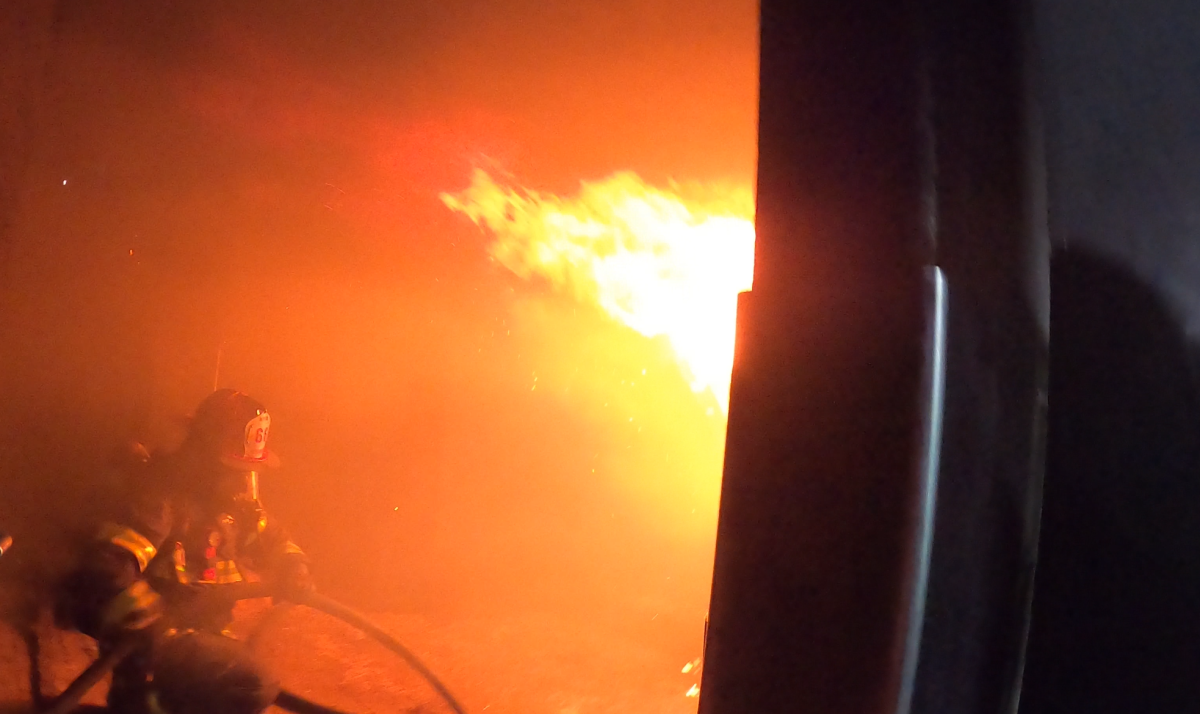 |
 |
Patrick: Cari’s return
Listener Feedback 1:
Mike P. writes:
Greetings FHB podcast team!
I am a longtime listener, retired engineer, avid do-it-yourselfer, and a great admirer of the skills, knowledge, hard work and conscientiousness of your team and the legion of like-minded professionals out there.
I recently assisted my elderly mother to find a professional to paint and do some restoration work on her house. My entry criteria were simply to find good work at a good price. However, what I have subsequently discovered is that there perhaps should have been another significant criteria. What I am seeking are your thoughts and recommendations as to how one might better conduct a search and select a contractor in light of these additional important considerations.
I started my search at a local paint supplier, who provided me with a couple of very solid and enthusiastic recommendations. Both of these painters were very responsive in providing bids and answering all my annoying questions that only an engineer can bring to bear. I felt equally good about each of them. The problem was that one bid was twice the cost of the other for apparently equivalent work.
Perhaps I should have dug deeper into this at the time to try to understand the basis of the significant price difference, but I decided to simply choose the lower-cost bid because the recommendation was solid. But I did continue to ponder whether I made the right decision and why the cost discrepancy could be so large.
Fast-forward a bit and I came across an excellent article in The New York Times explaining the difficult decisions that general contractors are faced with in how they choose and pay their laborers. It highlights a prevalent practice in recent years where laborers are misclassified or paid “off the books,” which often goes hand in glove with hiring unqualified workers. This information immediately made me wonder if this is the factor that explains the large price discrepancy between my two prospective painters. It also makes me feel badly at the thought I unwittingly decided to support unfortunate and unfair labor practices.
In retrospect, I probably should have exercised more diligence in my selection criteria. My questions to you fine folks are: Do you feel that it should be a responsibility for a consumer of these services to identify and select a contractor on the basis of their labor practices? In light of these practices, how do you recommend one goes about selecting a tradesperson or contractor to better reveal exactly what they are supporting?
Thanks!
Mike P.
Middletown, R.I.
The NYT article I reference is titled: “How Contracting Work Became a Race to the Bottom: The reality of being a contractor includes labor shortages, brutal competition and low, low margins.” I recommend you review the comments for this article as well.
RELATED STORIES
- Pros of Apprenticeship Programs
- Hiring Entry-Level Employees
- Choosing Contractors and Clients
- Working with a Home-Building Contractor
Question 1: What is a good solution to patch the drywall above a fiberglass shower?
Eric writes:
FHB Podcast,
What is a good, simple solution to patch the drywall above a fiberglass shower? The mud is poking out a bit so it will have to be sanded down. I am not looking to redo all the drywall above the shower at this point. Should I re-plaster, paint, and do it again in a few years? Or add special waterproof coating on that area?
Thanks for the great show and advice.
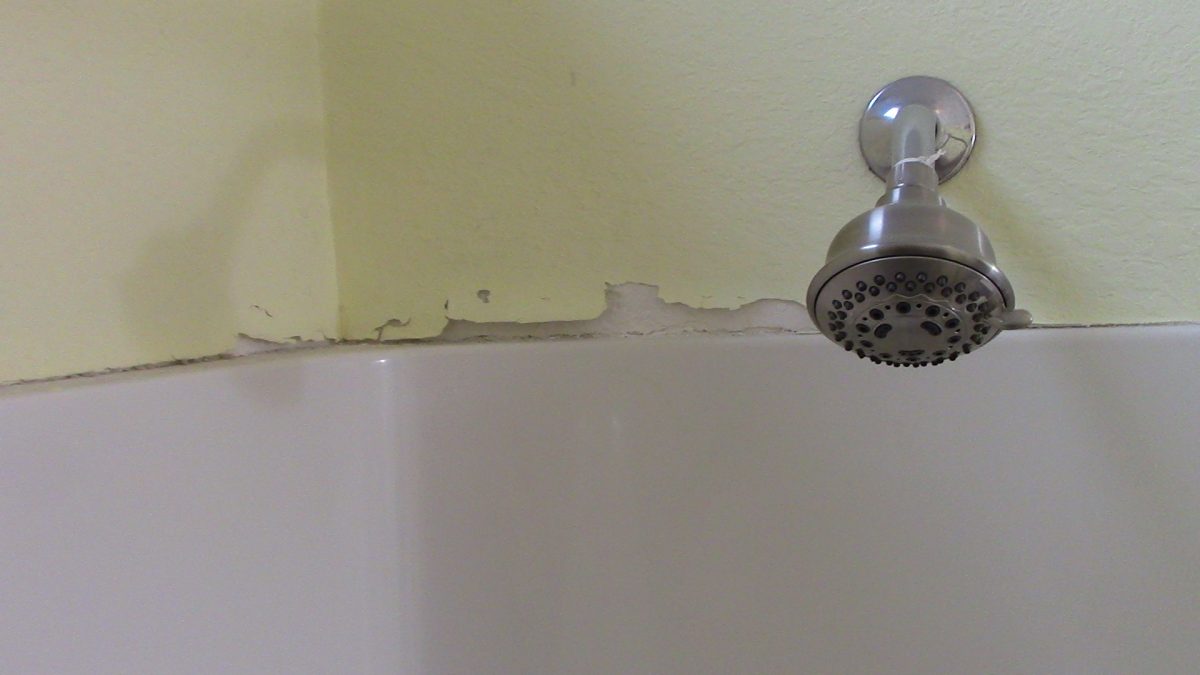 |
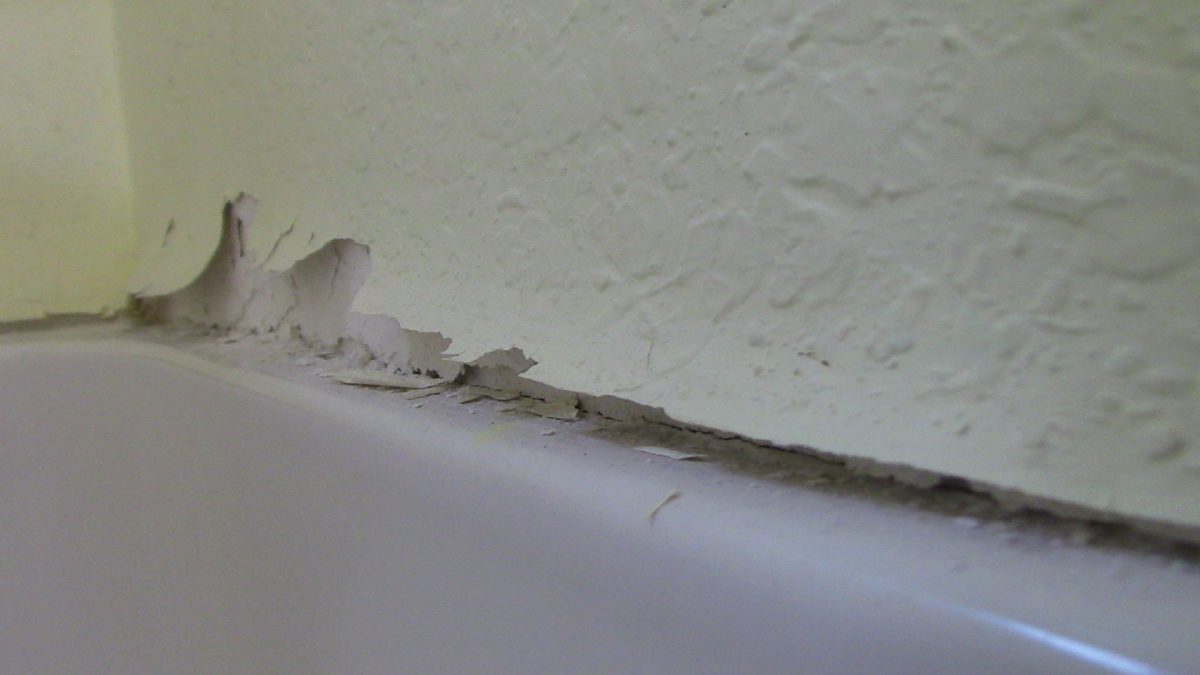 |
RELATED STORIES
- The Basics of Joint Compound
- VIDEO: How to Finish Drywall Around a Shower Enclosure
- Common Remodeling Drywall Repairs
Question 2: Is there a way to add air-sealing to an exposed-wood ceiling?
Chris writes:
Hi,
About three years ago my wife and I bought a 1950s bungalow in Hamilton, Ontario, in need of a lot of renovations. About that time I found your podcast, and my wife frequently laughs at the amount of time I’ve spent listening to past episodes! So it seems about time I wrote in a couple questions!
I learned after moving in that the house formerly had a flat roof and at some point had a hip roof built above it (sometime in the ’90s?). The flat roof was comprised of 2 1/2-in. thick tongue-and-groove planks with a layer of tar paper, tar, and gravel on top, and R-60 blown-in insulation was recently added in the attic space above this. Most of the house has 6-mil poly and drywall below the planks for the ceiling, but a couple rooms have exposed planks with no covering (see photos). I suspect there is a lot of air leakage through these areas, but we like the rustic look of the exposed wood ceilings. Is there a way to keep the wood ceilings but still decently air-seal?
My second question is probably more straightforward. There is a 16×16 addition built on piers. The crawlspace underneath is open on two sides, with 2×8 floor joists and fiberglass batt insulation between and less than 2 ft. from the ground to the bottom of the joists. I’d like to improve the insulation as the floor in that area gets quite cold in the winter. I’m wondering about rigid foam below the joists? What’s the best way to approach this?
Thanks. I’ve attached a couple pictures of some exposed ceiling. Just one of many projects to keep me busy for years to come!
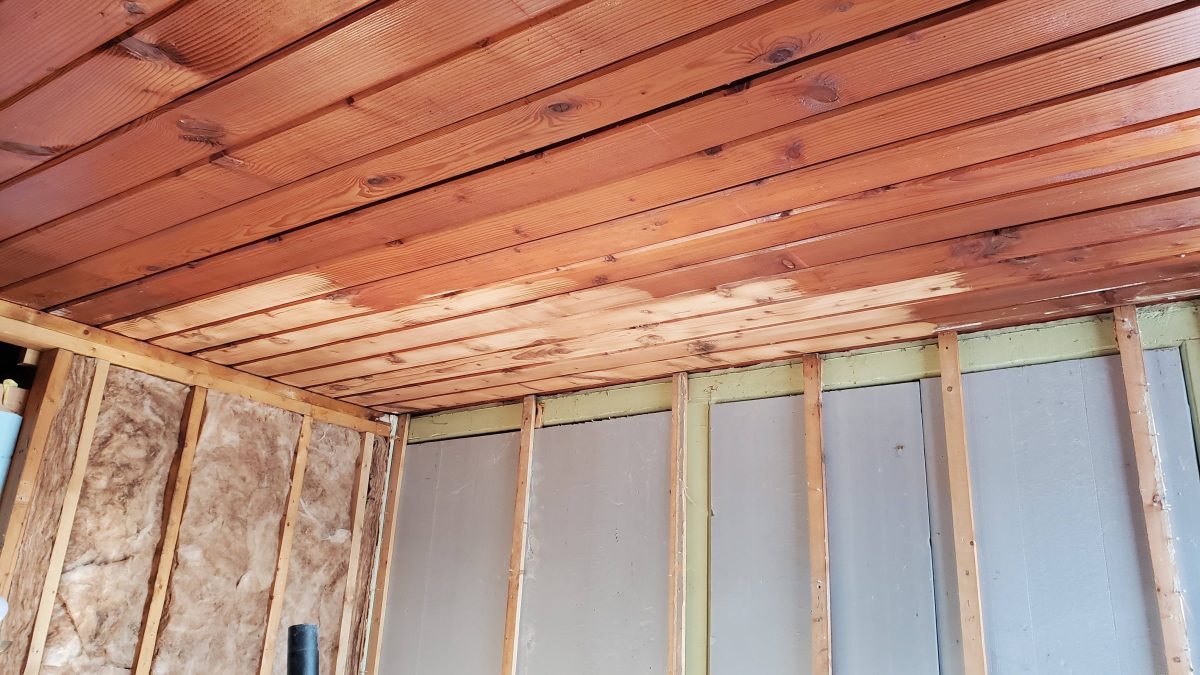 |
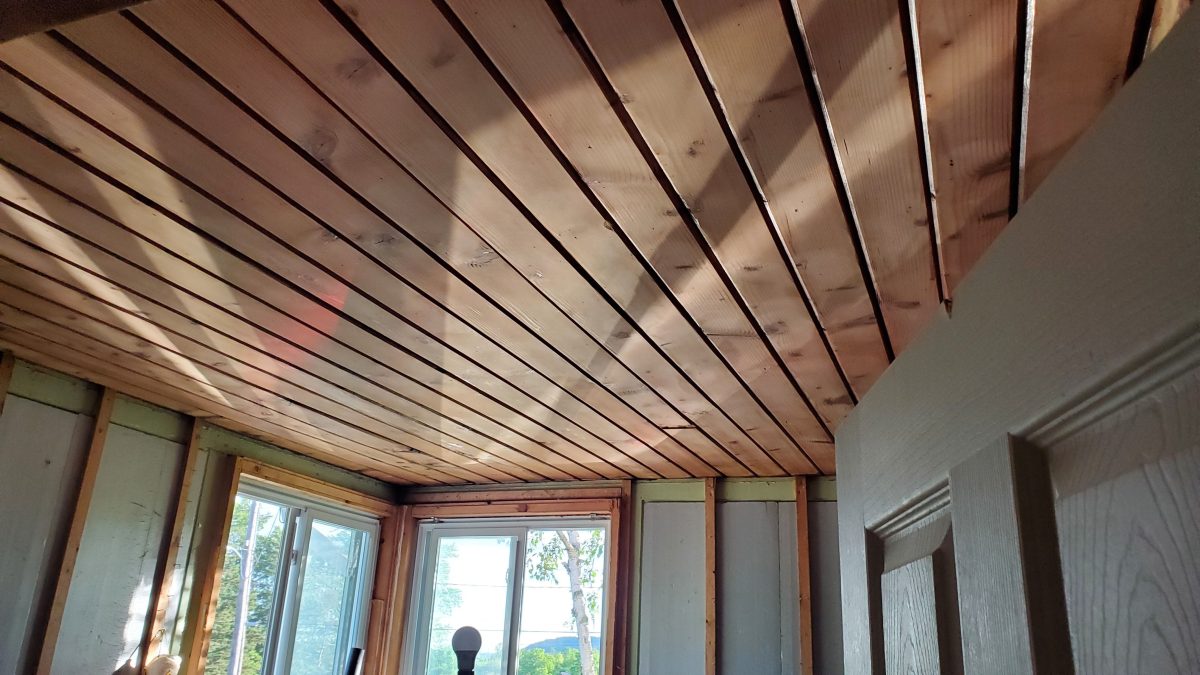 |
RELATED STORIES
- Air Barriers Under Paneling
- GBA.com: Air-Sealing a Tongue-and-Groove Ceiling
- GBA.com: Insulating and Air-Sealing a Vaulted Ceiling
Question 3: Is there a simple fix for correcting the grade of a patio against the house?
Mike writes:
Hi guys,
I am a relatively new listener to the show.
I’m doing some drywall repairs and new flooring for a friend, and today I encountered some drywall damage that was clearly due to water/moisture. When I opened up the interior section of this wall further, I discovered that the stucco paper was completely deteriorated in a roughly 1-sq.-ft. to 2-sq.-ft. section from the sill plate upward. I was surprised that everything was dry, even though we had some rain these past few days.
I checked the exterior side of this wall and found that the concrete patio had been poured too high and was just at, or slightly above the weep screed. Furthermore, when I ran a hose on the patio near that area, the water ran toward the house, not away from the house. The pad mostly slopes away from the house, but in this area it is relatively flat, which I can only assume was done because whoever poured it realized they were too high at this point.
The backyard does not appear to be graded correctly and is mostly flat. To pour the pad correctly the first time, I imagine would have required significant grading and/or a drainage system to prevent water from accumulating where the pad meets the lawn and potentially flooding back toward the house.
This house was built in the ’70s and already needs significant repairs in order to sell or rent. I want to help them find an efficient solution to this problem, but I believe the correct solution is to remove the pad and replace the flashing, weather barrier, and stucco along this damaged section of wall (and possibly farther, for all I know at this point). Then the surrounding patio area would need to be graded correctly, a drainage system installed to divert water away from this patio area, and finally the patio replaced with another concrete slab or pavers.
Is there some other solution worth considering that might be less expensive?
The part that I’m stuck on is how on earth this area is dry right now, despite clear evidence of past water ingress at/near the sill plate. This area of the exterior wall is located at an area where a short segment of the roof meets a wall and appears to divert water down the wall. The roof appears to have been replaced relatively recently, so perhaps the roof was flashed in such a way to divert water further away from the wall than it was previously.
Thanks,
Mike
P.S. I’m also working on an addition to my house and taking on a new construction project with my dad in the near future. My goal is to get my general contractor’s license with my owner-builder experience. Remodeling and construction projects is how I’ve spent most of my weekends, and I recently decided to take the plunge into this industry full-time. Thanks for all that you guys do to help inform and educate new builders like me.
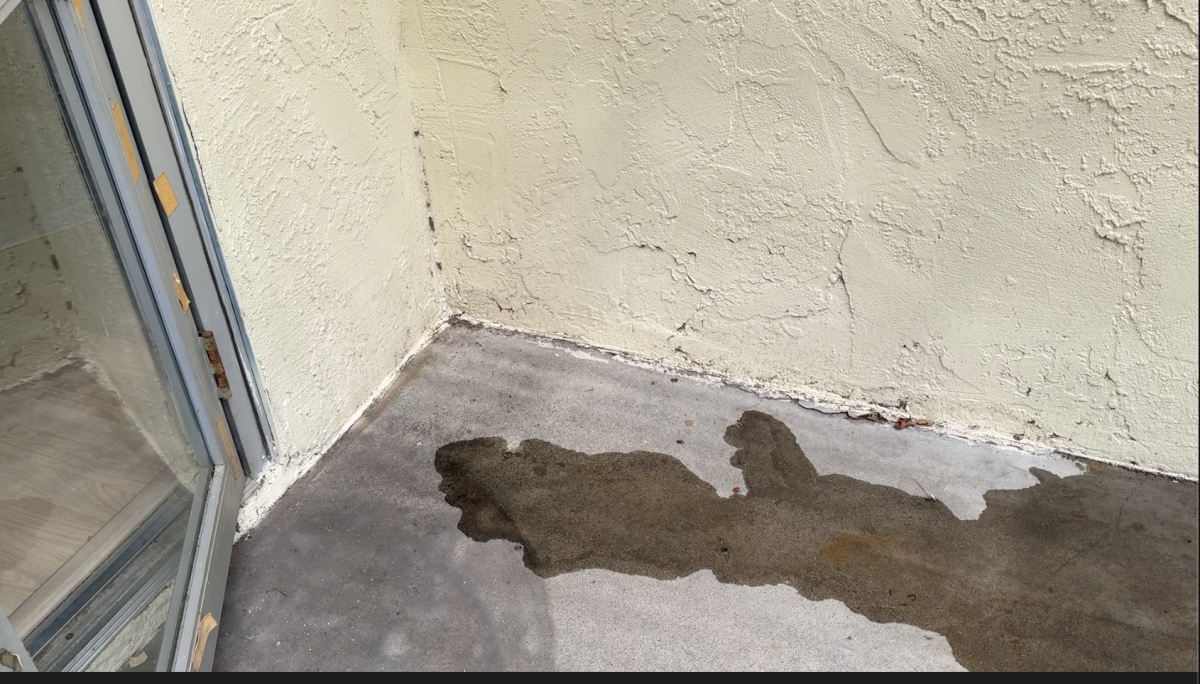 |
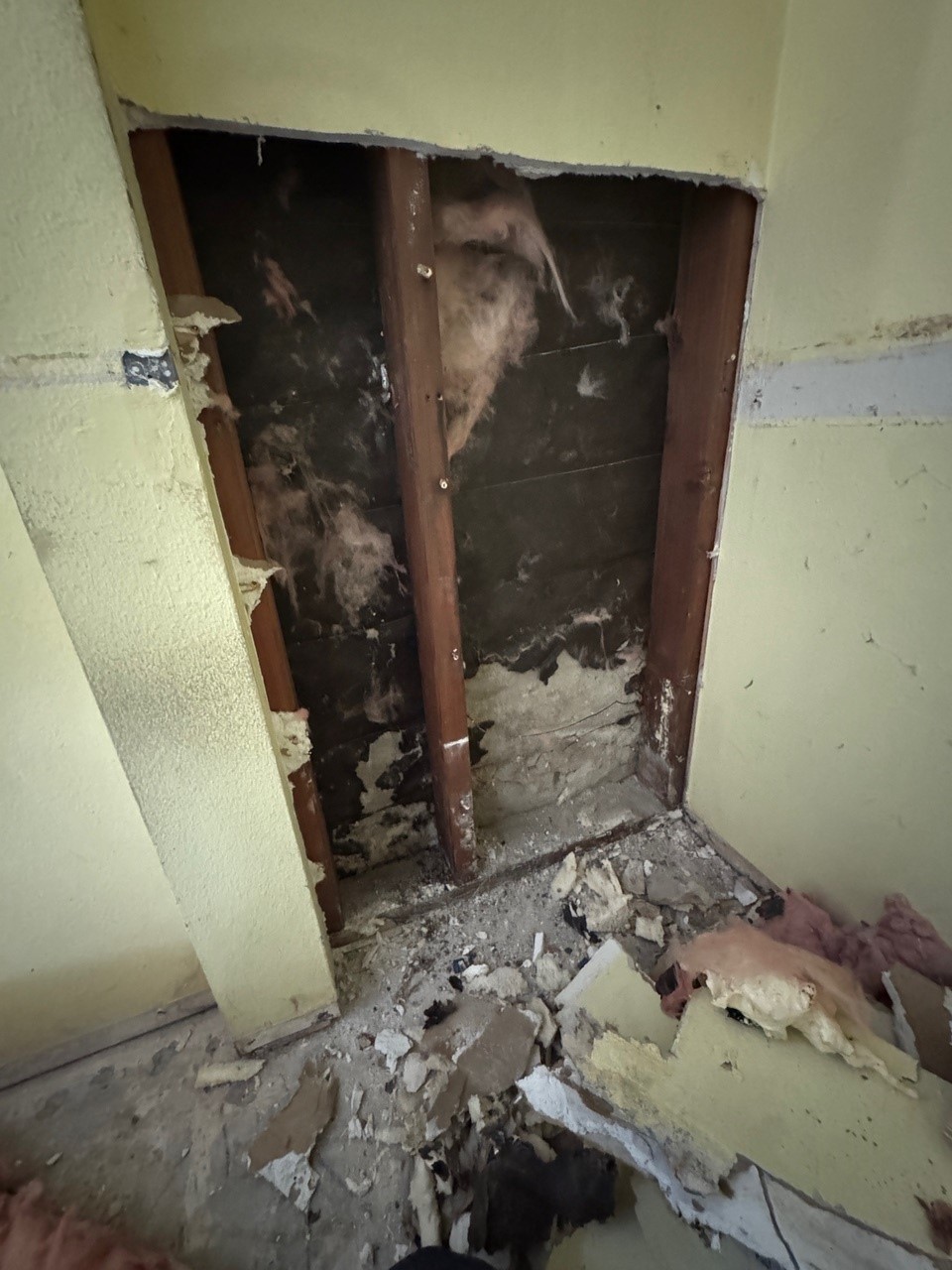 |
RELATED STORIES
- Understanding Control Layers
- How to Safely Pour Concrete Against Siding
- A Concrete-Paver Patio from the Ground Up
Sign Up for a Fine Homebuilding All Access Membership Today!
Unfortunately that is all the time we have for today. Thanks to Ian, Grant, and Cari for joining me and thanks to all of you for listening. Remember to send us your questions and suggestions to [email protected] and please like, comment, or review us no matter how you’re listening–it helps other folks find our podcast.
Happy Building!
Fine Homebuilding Recommended Products
Fine Homebuilding receives a commission for items purchased through links on this site, including Amazon Associates and other affiliate advertising programs.

Affordable IR Camera
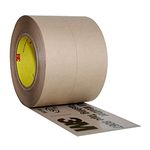
8067 All-Weather Flashing Tape

Handy Heat Gun
